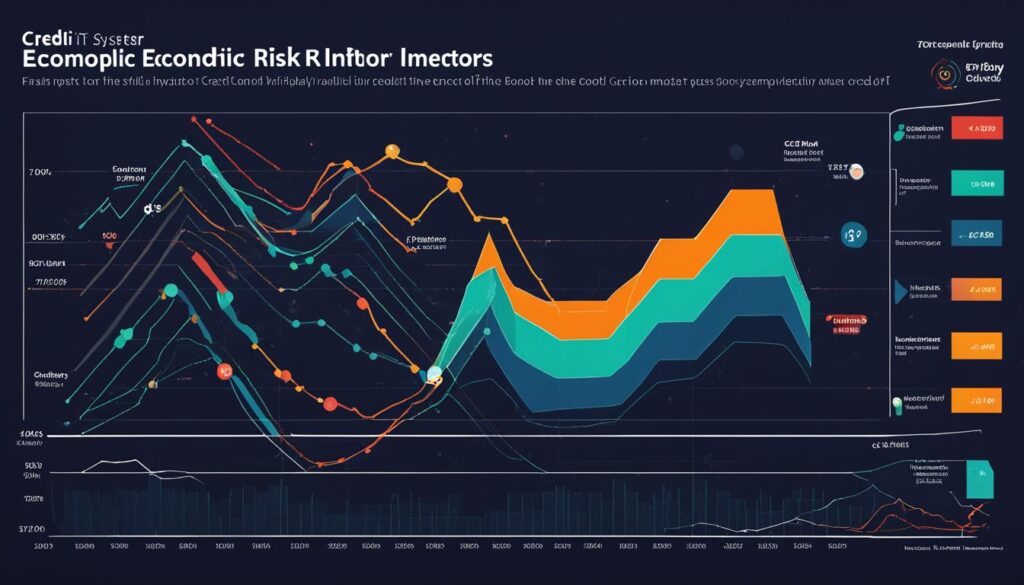When it comes to investing in bonds, understanding the concept of credit risk is paramount. Credit risk refers to the potential for an issuer to default on payments of interest and principal. This risk can significantly impact the return on investment and the overall performance of a bond portfolio. Analyzing credit risk is essential for making informed investment decisions and ensuring the stability and profitability of bond investments.
Types of Risks in Bond Investments
Bond investments come with several types of risks that investors need to consider. Understanding these risks is crucial for successful bond investing. The main types of risks in bond investments include:
- Credit Risk: This is the risk of default by the bond issuer. It refers to the possibility that the issuer may be unable to make interest or principal payments as scheduled. Investors need to assess the creditworthiness of the issuer before investing to evaluate the likelihood of default.
- Liquidity Risk: This risk refers to the possibility of not being able to sell the bond quickly without causing a significant impact on its price. It is important for investors to consider the liquidity of the bond market and the specific bond they are investing in.
- Interest Rate Risk: Interest rate risk is the risk that changes in interest rates will affect the value of the bond. When interest rates rise, bond prices generally fall, and vice versa. Investors need to consider the potential impact of interest rate fluctuations on their bond investments.
- Prepayment Risk: Prepayment risk pertains to the possibility that the issuer will pay off the principal amount sooner than anticipated. This can affect the return and duration of the bond investment. Investors should be aware of the potential for early repayment and its implications.
- Extension Risk: Extension risk is the risk that the issuer will take longer than expected to repay the principal. This can also impact the return and duration of the bond investment. Investors need to consider the possibility of extended repayment periods when assessing this risk.
These risks should be carefully analyzed and understood before making bond investments. Effective risk management strategies can help investors mitigate these risks and make informed investment decisions.
| Risk Type | Description |
|---|---|
| Credit Risk | The risk of default by the bond issuer, potentially leading to a loss of interest and principal payments. |
| Liquidity Risk | The risk of not being able to sell the bond quickly without significantly impacting its price. |
| Interest Rate Risk | The risk that changes in interest rates will affect the value of the bond. |
| Prepayment Risk | The risk that the issuer will pay off the principal amount sooner than anticipated. |
| Extension Risk | The risk that the issuer will take longer than expected to repay the principal. |
Factors Affecting Credit Risk
Credit risk in bond investments is influenced by various factors that investors need to consider. These factors play a crucial role in assessing the creditworthiness of issuers and determining the level of risk associated with investing in their bonds.
One of the key factors affecting credit risk is the issuer’s credit rating. Higher-rated issuers are generally considered to have lower credit risk compared to lower-rated issuers. Credit rating agencies, such as Standard & Poor’s, Moody’s, and Fitch, assign credit ratings to issuers based on their evaluation of the issuer’s ability to meet their debt obligations.
Another important factor to analyze is the financial health of the issuer. This involves assessing factors such as cash flow, debt levels, and profitability. A financially stable issuer with strong cash flow and manageable debt levels is less likely to default on its bond payments. Additionally, a profitable issuer indicates the ability to generate sufficient income to meet its financial obligations.
The industry outlook and market conditions also play a significant role in determining credit risk. Certain industries may be more susceptible to economic downturns or faced with specific challenges that increase the likelihood of default. Evaluating the industry outlook and market conditions helps investors assess the risks associated with bonds issued within those sectors.
By evaluating these factors, investors can make informed decisions about credit risk in bond investments. Understanding the issuer’s credit rating, financial health, and industry outlook provides valuable insights into the level of risk associated with investing in their bonds. This analysis forms the foundation for effective risk management strategies and helps investors optimize their bond portfolios.
| Rating | Definition | Default Probability |
|---|---|---|
| AAA | Highest credit quality | Negligible |
| BBB | Medium credit quality | Low |
| CCC | Poor credit quality | High |
Risk Management Strategies for Bond Investments
Implementing effective risk management strategies is crucial for mitigating credit risk in bond investments. By employing various tactics, investors can protect their portfolios and maximize profitability. These strategies include:
Diversification
Diversification is an essential strategy that involves spreading investments across different issuers, sectors, and bond types. By diversifying their portfolio, investors reduce their exposure to any single credit risk. This approach allows them to distribute risk and potentially offset losses from underperforming bonds with gains from other investments. Diversification is a widely recognized technique used by experienced investors to manage credit risk and enhance portfolio stability.
Credit Analysis
Credit analysis is another crucial strategy for managing credit risk in bond investments. Before investing, it is essential to conduct comprehensive credit analysis of potential bond issuers. This analysis evaluates the creditworthiness and financial health of issuers, including their ability to fulfill interest and principal payments. Through in-depth research and analysis, investors gain insight into the likelihood of default and make informed investment decisions.
Monitoring Market Conditions
Regularly monitoring market conditions is vital for managing credit risk in bond investments. By staying informed about economic indicators and interest rate movements, investors can make timely adjustments to their bond portfolios. For example, they can respond to changing market conditions by reallocating investments or adjusting bond maturities to align with their risk tolerance. By actively monitoring the market, investors can proactively manage credit risk and optimize their bond investment strategies.
Overall, by implementing risk management strategies such as diversification, credit analysis, and monitoring market conditions, investors can effectively mitigate credit risk in bond investments. These strategies enable investors to make informed decisions, reduce potential losses, and maximize profitability. Through careful risk management, bond investors can safeguard their portfolios and achieve their investment objectives.
Keep in mind that the content provided in this article is for informational purposes only and should not be construed as financial or investment advice. It is always recommended to consult with a professional financial advisor before making any investment decisions.
Conclusion
As an investor in bond markets, analyzing credit risk is paramount to ensuring the profitability and security of your investment portfolio. By understanding the various types of risks associated with bonds, such as credit risk, liquidity risk, interest rate risk, prepayment risk, and extension risk, you can make informed decisions and manage credit risk effectively.
One of the key steps in analyzing credit risk is evaluating the factors that influence it. This includes assessing the creditworthiness of bond issuers through credit analysis and considering their financial health, industry outlook, and market conditions. By evaluating these factors, you can assess the likelihood of default and make sound investment choices.
Implementing risk management strategies is another crucial aspect of managing credit risk in bond investments. Diversification, spreading your investments across different issuers, sectors, and bond types, helps reduce exposure to any single credit risk. Regularly monitoring market conditions, including economic indicators and interest rate movements, allows you to adjust your portfolio and mitigate credit risk effectively.
Remember, credit risk analysis is an ongoing process. Market conditions and issuer creditworthiness can change over time, making continuous assessment and management of credit risk essential for protecting your investments and achieving your financial objectives.
FAQ
What is credit risk in bond investments?
Credit risk in bond investments refers to the potential for an issuer to default on payments of interest and principal.
What are the types of risks in bond investments?
The types of risks in bond investments include credit risk, liquidity risk, interest rate risk, prepayment risk, and extension risk
How does credit rating affect credit risk in bond investments?
Credit rating plays a significant role in assessing credit risk. Higher-rated issuers are generally considered to have lower credit risk compared to lower-rated issuers.
What factors influence credit risk in bond investments?
Factors that influence credit risk in bond investments include the issuer’s credit rating, financial health, industry outlook, and market conditions.
What are some risk management strategies for bond investments?
Risk management strategies for bond investments include diversification, conducting thorough credit analysis, and monitoring market conditions.
Source Links
- https://www.gsam.com/content/gsam/hkg/en/advisors/market-insights/gsam-insights/2024/1q2024-fixed-income-outlook.html
- https://in.investing.com/news/uk-shares-lower-at-close-of-trade-investingcom-united-kingdom-100-down-099-3969920
- https://www.nasdaq.com/articles/higher-investment-risk-appetite-boosts-activity-at-lme-by-11-in-2023
Disclaimer
All information on this website is of a general nature. The information is not adapted to conditions that are specific to your person or entity. The information provided can not be considered as personal, professional or legal advice or investment advice to the user.
This website and all information is intended for educational purposes only and does not give financial advice. Signal Mastermind Signals is not a service to provide legal and financial advice; any information provided here is only the personal opinion of the author (not advice or financial advice in any sense, and in the sense of any act, ordinance or law of any country) and must not be used for financial activities. Signal Mastermind Signals does not offer, operate or provide financial, brokerage, commercial or investment services and is not a financial advisor. Rather, Signal Mastermind Signals is an educational site and a platform for exchanging Forex information. Whenever information is disclosed, whether express or implied, about profit or revenue, it is not a guarantee. No method or trading system ensures that it will generate a profit, so always remember that trade can lead to a loss. Trading responsibility, whether resulting in profits or losses, is yours and you must agree not to hold Signal Mastermind Signals or other information providers that are responsible in any way whatsoever. The use of the system means that the user accepts Disclaimer and Terms of Use.
Signal Mastermind Signals is not represented as a registered investment consultant or brokerage dealer nor offers to buy or sell any of the financial instruments mentioned in the service offered.
While Signal Mastermind Signals believes that the content provided is accurate, there are no explicit or implied warranties of accuracy. The information provided is believed to be reliable; Signal Mastermind Signals does not guarantee the accuracy or completeness of the information provided. Third parties refer to Signal Mastermind Signals to provide technology and information if a third party fails, and then there is a risk that the information may be delayed or not delivered at all.
All information and comments contained on this website, including but not limited to, opinions, analyzes, news, prices, research, and general, do not constitute investment advice or an invitation to buy or sell any type of instrument. Signal Mastermind Signals assumes no responsibility for any loss or damage that may result, directly or indirectly, from the use or dependence on such information.
All information contained on this web site is a personal opinion or belief of the author. None of these data is a recommendation or financial advice in any sense, also within the meaning of any commercial act or law. Writers, publishers and affiliates of Signal Mastermind Signals are not responsible for your trading in any way.
The information and opinions contained in the site are provided for information only and for educational reasons, should never be considered as direct or indirect advice to open a trading account and / or invest money in Forex trading with any Forex company . Signal Mastermind Signals assumes no responsibility for any decisions taken by the user to create a merchant account with any of the brokers listed on this website. Anyone who decides to set up a trading account or use the services, free of charge or paid, to any of the Broker companies mentioned on this website, bears full responsibility for their actions.
Any institution that offers a service and is listed on this website, including forex brokers, financial companies and other institutions, is present only for informational purposes. All ratings, ratings, banners, reviews, or other information found for any of the above-mentioned institutions are provided in a strictly objective manner and according to the best possible reflection of the materials on the official website of the company.
Forex/CFD trading is potentially high risk and may not be suitable for all investors. The high level of leverage can work both for and against traders. Before each Forex/CFD investment, you should carefully consider your goals, past experience and risk level. The opinions and data contained on this site should not be considered as suggestions or advice for the sale or purchase of currency or other instruments. Past results do not show or guarantee future results.
Neither Signal Mastermind Signals nor its affiliates ensure the accuracy of the content provided on this Site. You explicitly agree that viewing, visiting or using this website is at your own risk.




